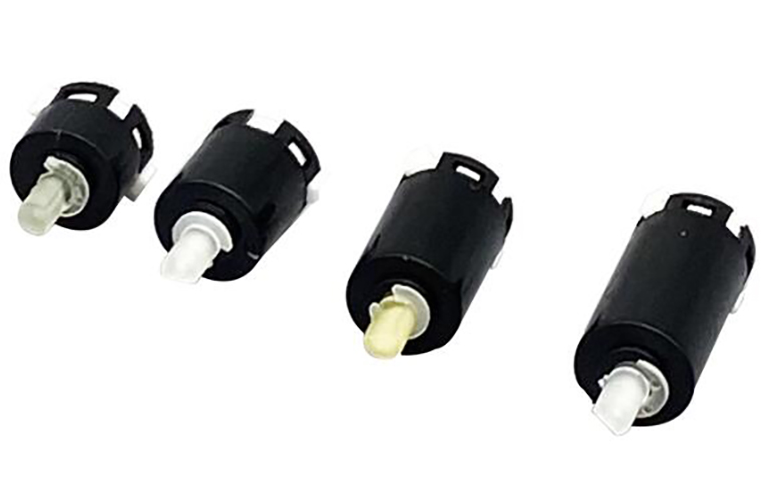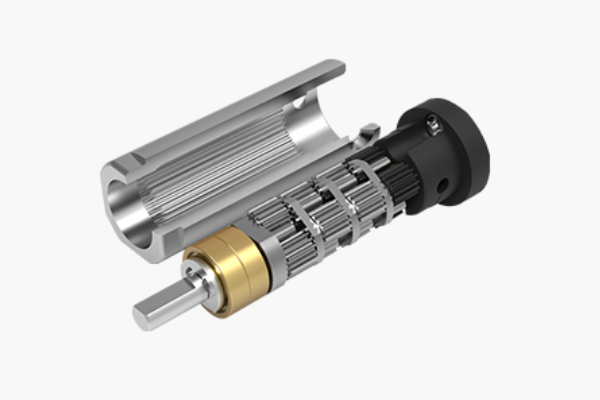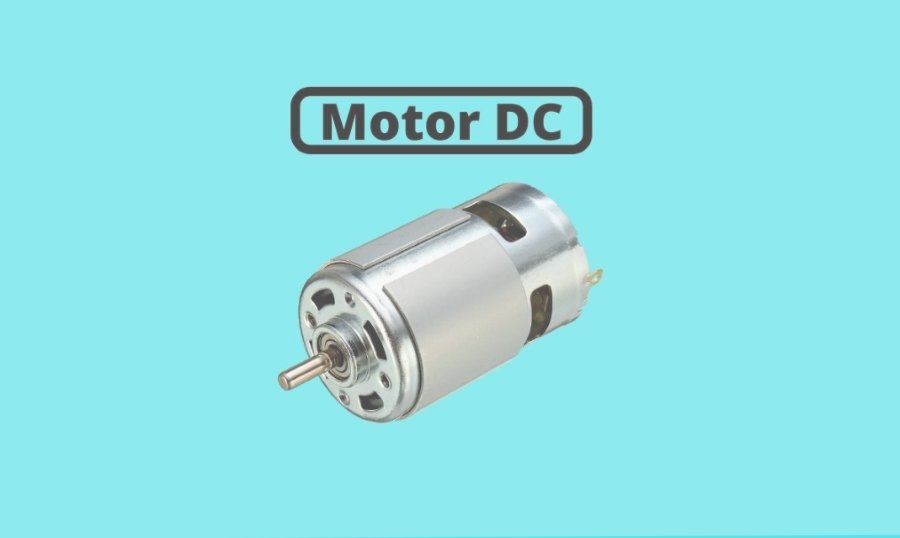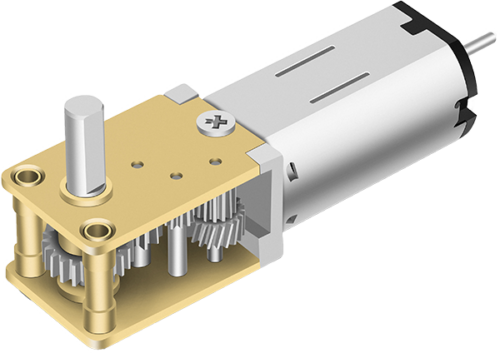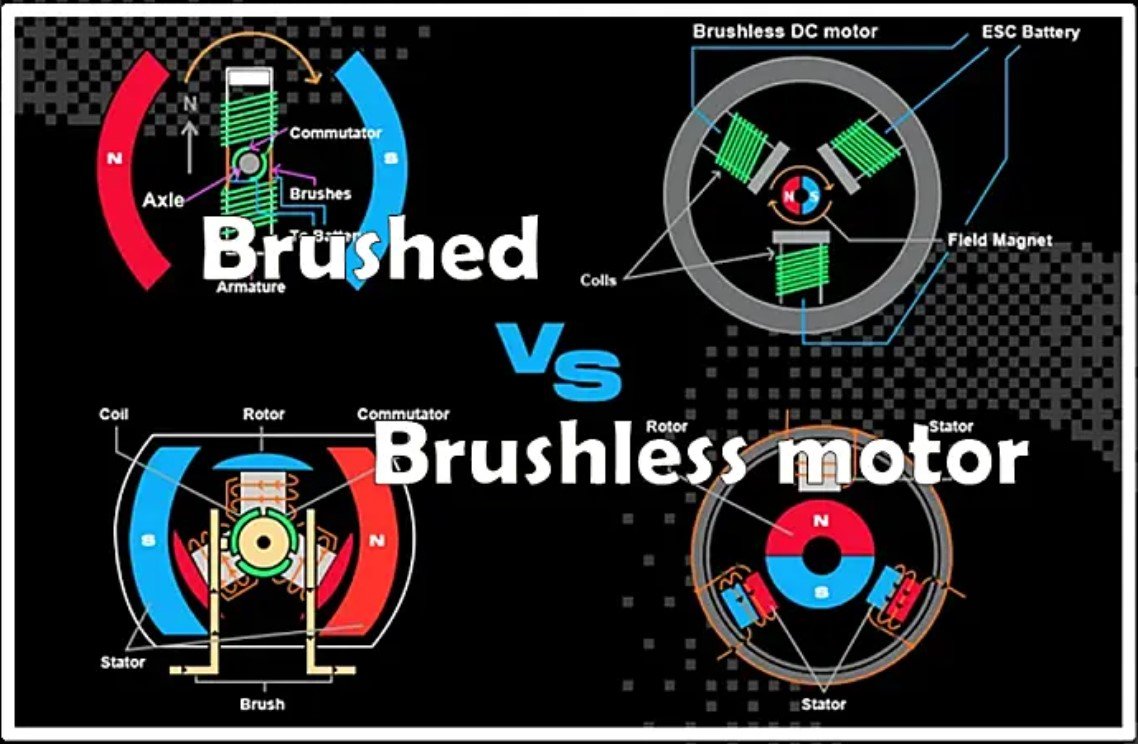In our previous articles, we have already delved into the distinctions between spur gear motors and planetary gear motors. Today, let Annie take you on a journey to explore the key points of three common types of gearboxes, along with the selecting the perfect one for your practical needs.
Spur gearbox
A spur gearbox is a type of cylindrical gear characterized by parallel axes and straight teeth that run parallel to the axis. This design makes them commonly used for altering speed and torque of specific objects, as well as for transmission, torque multiplication, speed amplification, and precision positioning within systems. A spur gearbox, also known as a “spur gearhead,” is a prevalent mechanical device.
The key features of a spur gearhead
a. Moderate torque capability with the potential for slim and quiet design.
b. High efficiency, reaching 91% per stage.
c. The input shaft and output shaft can either be aligned along the same central axis or positioned on different central axes.
d. Varied rotational direction of input and output due to different gear stages. When the number of stages in a spur gearbox is odd, the rotation direction of the gearbox’s output shaft is opposite to that of the motor’s output shaft.
When the number of stages in a spur geabox is even, the rotation direction of the gearbox’s output shaft is the same as that of the motor’s output shaft.
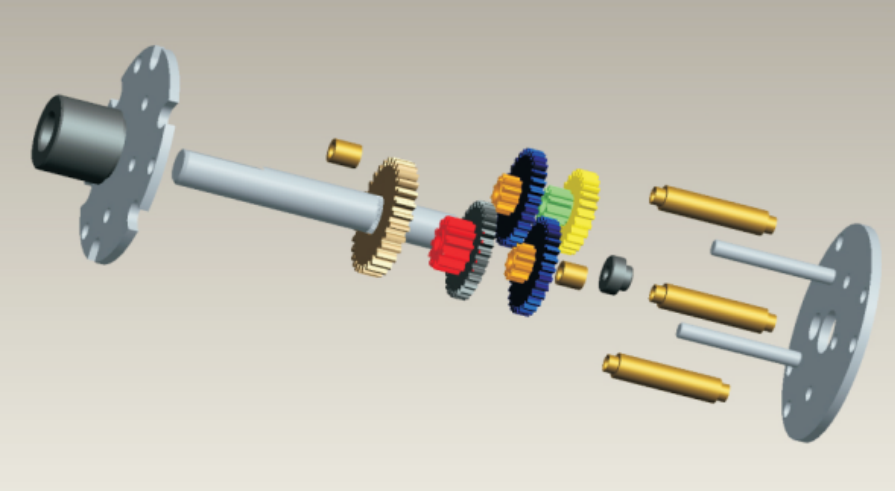
Spur geadhead efficiency
Gearboxes can incur mechanical losses due to factors such as gear meshing and bearing friction. Spur gear reduction boxes are typically calculated with an efficiency of 91%. The example provided below is for reference purposes only, as efficiency can vary based on conditions like torque and speed of the DC motor.
Taking the example of a spur gearbox with 5-stage gear meshing, the overall system efficiency can be calculated using the formula: Efficiency(n) = 0.91 × 0.91 × 0.91 × 0.91 × 0.91 ≈ 0.624, approximately 62.4%.
Micro planetary gearbox
The mini planetary gearbox, also known as a micro planetary gearbox or miniature planetary gearbox, is a widely used type of reducer. It consists of planetary gears, a sun gear, and a ring gear. Its design incorporates features like power distribution, speed reduction, and multiple gear engagements to enhance output torque, adaptability, and operational efficiency. The sun gear is typically positioned at the center, while the planetary gears revolve around it, receiving torque from the sun gear. The ring gear (outer casing) meshes with the planetary gears.
These gearboxes can be paired with brushed DC motors, brushless DC motors, coreless motors, and other options to provide optimal performance.
The key features of a planetary gearbox
a. Capable of transmitting high torque.
b. Efficiency of approximately 79% per stage.
c. Input and output are positioned at the same center.
d. The rotation direction of the output shaft of the planetary gearbox is the same as that of the output shaft of the motor, independent of the gear stage.
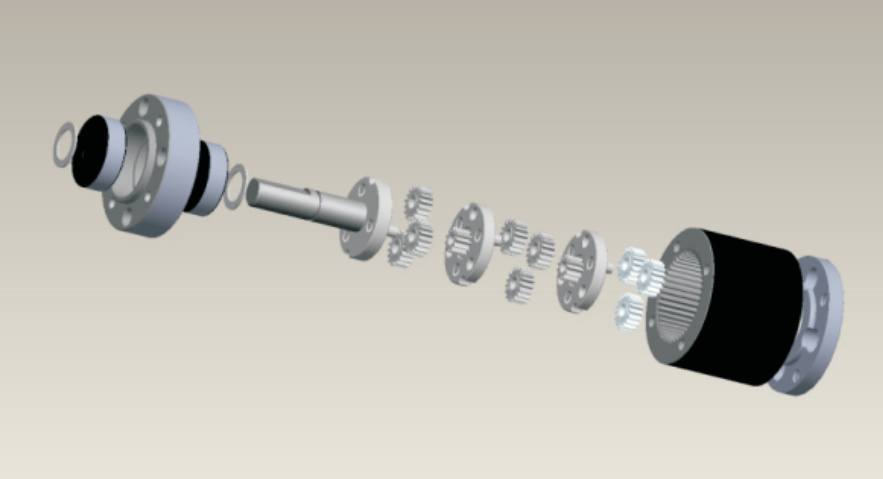
At INEED Electronics, our planetary gearboxes are available in both plastic and metal. Plastic planetary gearboxes feature one or multiple stages of gear reduction, with internal gears and casing crafted from plastic materials. On the other hand, metal gear planetary gearboxes consist of three or four gears engaging in each stage. Our planetary gearbox range caters to diverse application needs, offering optimal transmission solutions from robust metal designs to lightweight and flexible plastic options.
Let’s quickly compare the differences between plastic and metal planetary gearbox:
Planetary gearbox effciency
Similar to spur gear reduction boxes, planetary gearboxes also experience mechanical losses. The example provided below is for reference purposes only. In the case of a 3-stage planetary gear meshing, the overall efficiency can be calculated as follows: Efficiency(n) = 0.79 × 0.79 × 0.79 ≈ 0.493, approximately 49.3%.
Micro Worm Gearbox
A special design of gears is known as a worm gear. In this configuration, the teeth are wrapped around the shaft like threads on a screw. The gear that meshes with the worm is called the worm wheel or worm gear. A gear arrangement consisting of a worm and worm wheel is commonly referred to as a worm drive or worm gear transmission.
The transmission ratio of a worm gear can be expressed using the following straightforward formula: Transmission Ratio = Number of Teeth on Worm Wheel / Number of Threads on Worm Shaft
Here, the number of teeth on the worm wheel refers to the count of teeth on the wheel, while the number of threads on the worm shaft refers to the quantity of helical threads per inch (or per millimeter) on the shaft. This transmission ratio determines the proportion of rotational speed and torque change from the input motion (worm shaft) to the output motion (worm wheel). It’s important to note that worm gear transmissions are typically utilized in applications requiring high reduction ratios, as they are capable of providing substantial reduction effects.
The relationship between Gearbox Output Speed, Torque, Motor Speed, and Torque
a. Speed of gear motor= Motor speed (rpm) / Gear ratio (ratio)
b. Gearbox output torque = Motor output torque (Ts) × Gear ratio × Gear transmission efficiency (n)
Example: Motor’s no-load speed: 14800 RPM, Starting torque (Ts) = 15 g.cm, with a 100:1 gear ratio, gearbox transmission efficiency: 60%
Motor speed (rpm) = 14800 / 100 = 148 RPM
Gearbox output torque = 15 × 100 × 60% = 900 g.cm

FAQ
What is the difference between a spur gearhead and a planetary gearhead?
In general, spur gearhead is the simpler and cheaper choice between of them. The disadvantage is that spur gear boxes have higher friction losses. Planetary gearheads have more complex designs, they include an input shaft that drives the center (sun) gear, which then rotates the surrounding (planet) gear. This arrangement allows each planetary gear to deliver torque precisely in sync with the others. The disadvantage is that the planetary gearbox has a lower efficiency than the spur gear in terms of mechanical output.
What is the difference between a planetary gearbox and a helical gearbox?
Greater Torque Capacity: Planetary gearboxes excel in managing heavier torque loads compared to helical gearboxes, thanks to their design. The multiple planet gears within a planetary gearbox distribute the load more evenly, resulting in a higher torque capacity than an equivalently sized helical gearbox.

